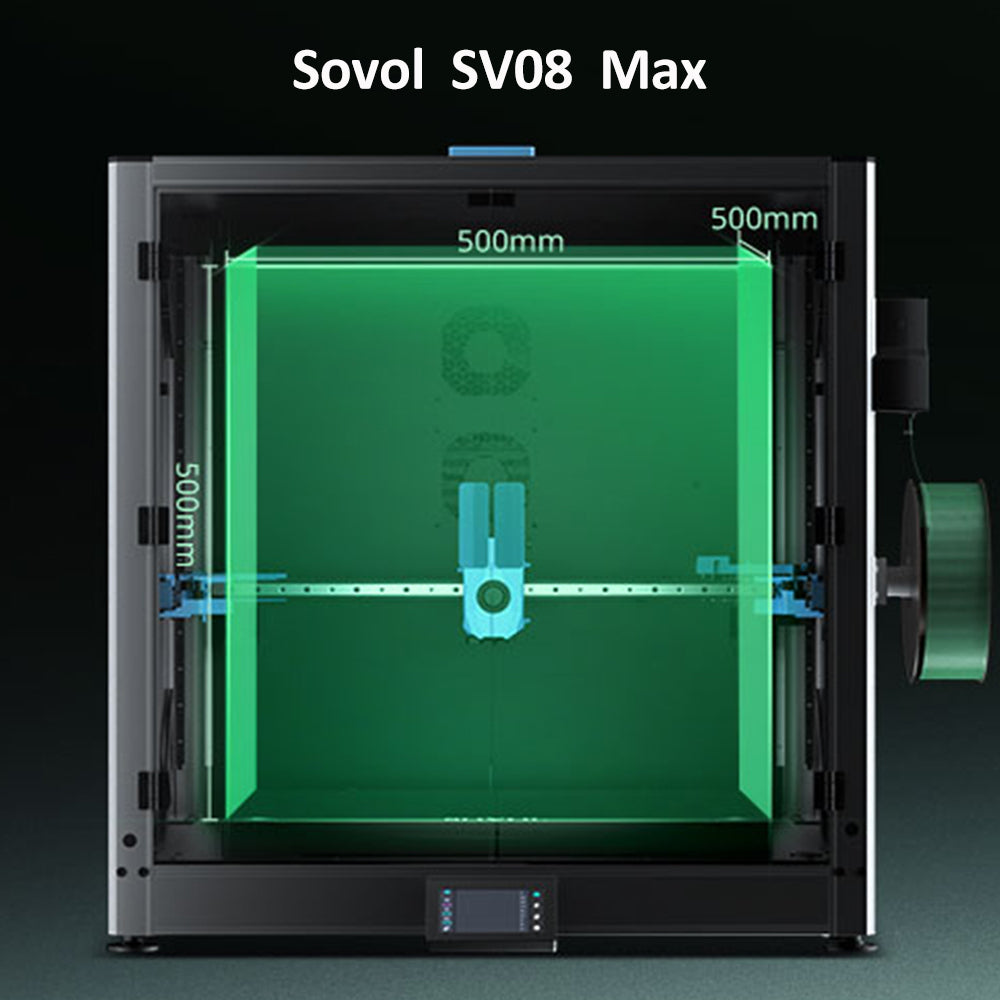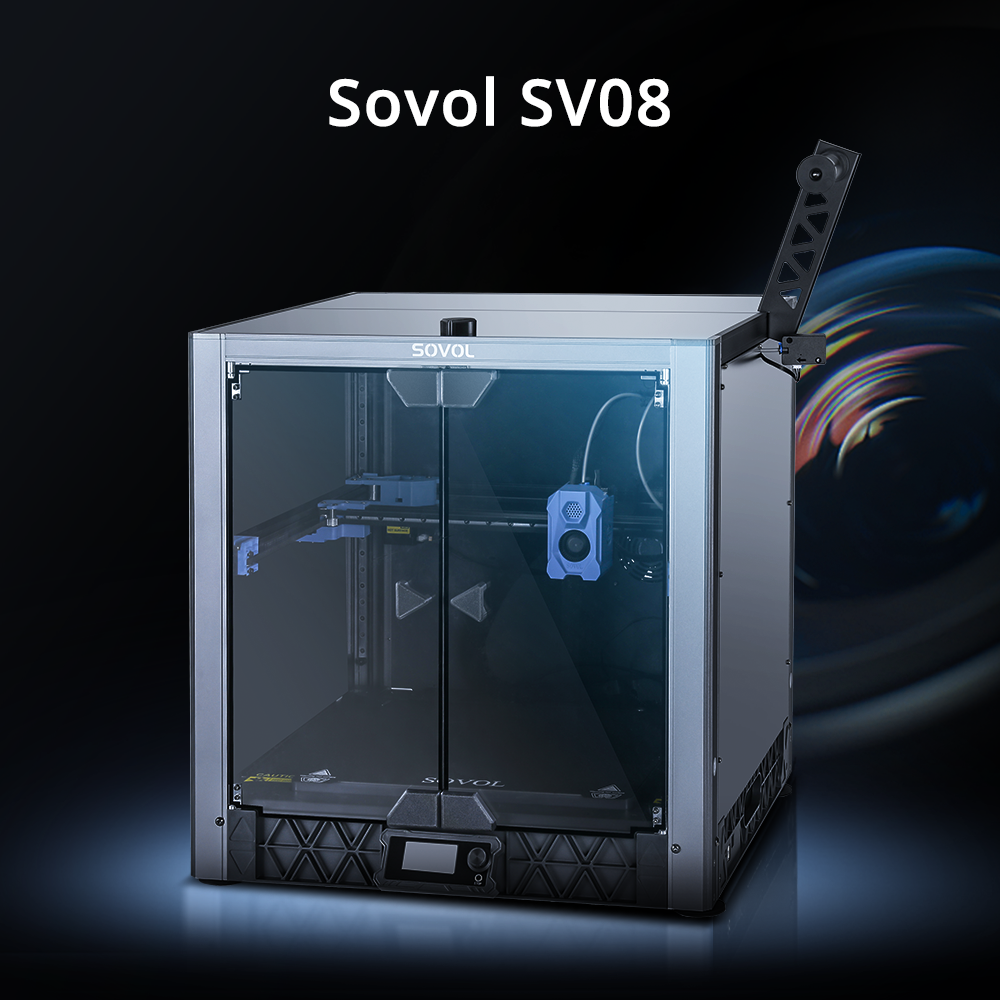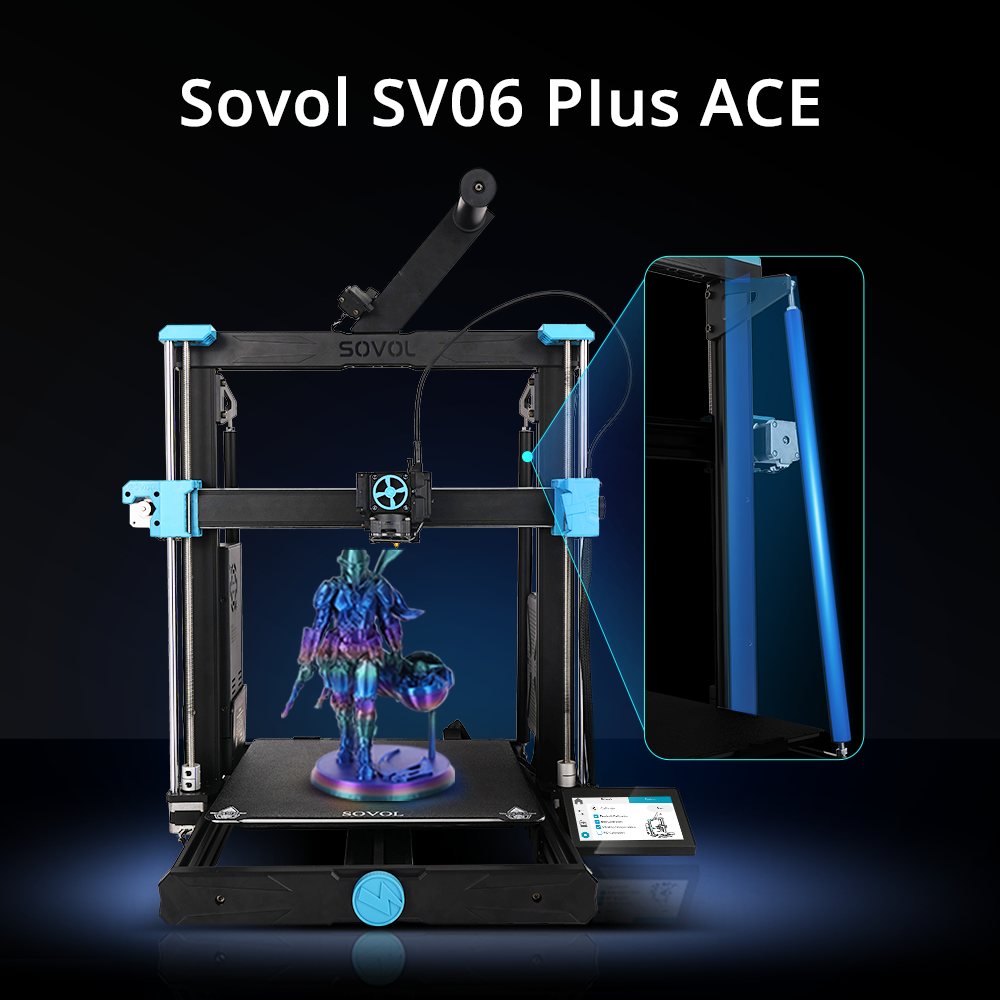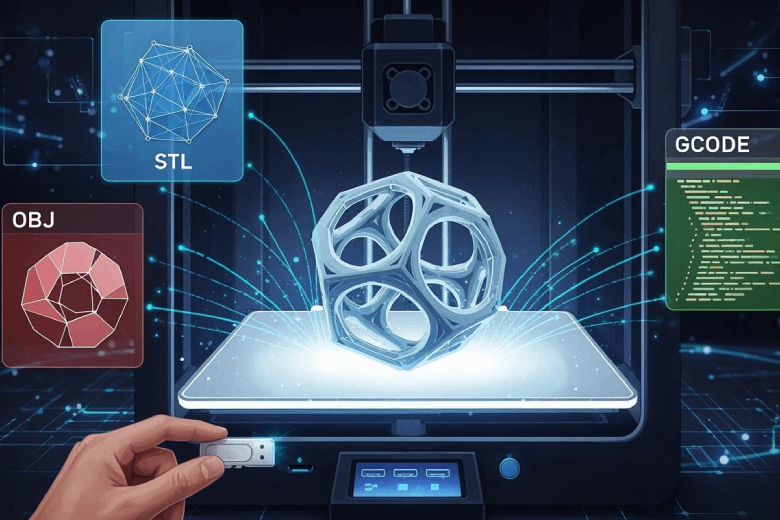You will find that 3D printers use several file formats, including STL, OBJ, 3MF, PLY, FBX, and G-Code. Each format offers unique advantages. Selecting the right file format influences your 3d printing results, affecting surface detail, color, and material options. The table below shows the most widely used file formats and their main features:
|
File Format |
Description |
|---|---|
|
STL |
Contains only surface geometry, supported by most CAD software. |
|
OBJ |
Preferred for colored 3D printing, accepted by many slicers. |
|
3MF |
Supports colors and materials, designed for additive manufacturing. |
|
PLY |
Captures shape and color data, useful for scanned models. |
|
FBX |
Stores geometry and animation, less common in slicers. |
|
G-Code |
Provides printer instructions, used by most 3D printers. |
Choosing wisely helps you achieve better quality and compatibility with your printer.
Key Takeaways
- STL is the most common file format for 3D printing. It is simple and widely supported but lacks color and texture information.
- OBJ files are ideal for colored prints. They store color and texture data, making them suitable for detailed models.
- 3MF is a modern format that supports multiple materials and detailed features. It is great for advanced 3D printing projects.
- Always check your printer's compatibility with file formats. Not all printers support every format, so verify before printing.
- Use mesh repair tools to fix errors in your 3D files. This step helps avoid printing failures and ensures better results.
Common 3D Printer File Formats
When you start working with 3D printers, you will encounter several 3d printer file formats. Each format has its own strengths and is suited for different tasks. Understanding these common file formats helps you choose the best option for your project and ensures compatibility with your printer and slicer software.
STL Format
STL is one of the most common 3d printer file formats. You will find it in almost every 3d printing workflow. STL files store only the surface geometry of a 3d model using triangles. This simplicity makes STL easy to use and widely supported by slicer software and 3d printers.
However, STL has some technical limitations that can affect your 3d printing results. Take a look at the table below to see the main issues and solutions:
|
Limitation |
Description |
Solution |
|---|---|---|
|
Non-manifold Edges |
More than two faces attach to the same edge, causing model integrity problems. |
Delete extra surfaces or adjust the thickness/distance between elements. |
|
Colliding Surfaces |
Parts of the model collide, creating internal spaces that slicer software cannot recognize. |
Keep spacing between parts or merge them when needed for a single STL file. |
|
Holes or Gaps in a Mesh |
Adjacent triangles do not share two common vertices, leading to printing errors. |
Use repair software to detect and fix missing triangles. |
|
Over-refined Mesh |
Too many triangles complicate file handling, though it does not cause printing errors. |
Use default CAD settings for exporting STL files or follow resolution guidelines. |
You should use STL when you need a simple, reliable format for single-material prints. It works well for prototypes and basic models but does not support color or material information.
OBJ Format
OBJ is another popular 3d printer file format. Unlike STL, OBJ files can store color and texture data. This makes OBJ a better choice when you want to print models with detailed colors or textures.
- OBJ files include color and texture information, which enhances the visual quality of your printed models.
- OBJ supports multiple polygons, such as triangles and hexagons, allowing for smoother and more accurate shapes.
- Many slicer software programs, CAD tools, and 3d printers support OBJ files.
You will see OBJ used in industries like retail, eCommerce, furniture, automotive, film, and gaming. For example, retailers use OBJ for 3D configurators and AR try-ons, while the film industry uses it for importing assets into animation and rendering environments. OBJ is a great choice when you need more than just geometry in your 3d printing files.
AMF Format
AMF, or Additive Manufacturing File Format, is a newer option among 3d printer file formats. AMF offers several advanced features:
- You can store multiple materials and blends in one file, which reduces manual work.
- AMF supports vertex colors and texture maps for full-color prints.
- The format allows you to pack build plates efficiently with hierarchies and assemblies.
- AMF files store important metadata, such as units and tolerances, to minimize errors.
- Curved geometry in AMF creates smoother surfaces with smaller file sizes compared to dense STL meshes.
Despite these advantages, AMF is not as widely adopted as STL. Many companies hesitate to switch due to the cost and risk of upgrading. However, as 3d printing technologies advance and regulations change, you may see more printers supporting AMF in the future.
3MF Format
3MF is a modern 3d printer file format designed for additive manufacturing. It addresses many of the limitations found in older formats like STL.
- 3MF files can store detailed information about colors and materials, which is essential for multi-material and color 3d printing.
- You can save multi-part models with individual colors and materials in a single file.
- 3MF supports intricate features like textures and lattice structures, which expands your design possibilities.
- The format allows for detailed communication of manufacturing data, improving the printing process.
Many major manufacturers, such as Autodesk, HP, Microsoft, and Siemens, support 3MF natively. If you want to take advantage of advanced 3d printing file types and features, 3MF is often the best 3d file format for your needs.
PLY and FBX Formats
PLY and FBX are less common 3d printer file formats, but they serve important roles in specific workflows.
- PLY is used mainly for 3D scanning. It captures detailed geometry and color, making it ideal for scientific visualization, museum artifact digitization, and high-resolution scans. PLY files store vertices, faces, color, transparency, and texture details.
- FBX is a proprietary format from Autodesk. It is used for exchanging data between content creation programs like Autodesk and Maya. You often need to convert FBX to STL before 3d printing.
Here is a quick comparison:
|
Format |
Data Storage |
Compatibility with 3D Printers |
|---|---|---|
|
PLY |
Designed for triangular surfaces, includes geometry, color, and surface details |
Suitable for 3D scanning and printing |
|
FBX |
Proprietary format for content creation software, requires conversion to STL |
Needs conversion for 3D printing |
You should use PLY when working with scanned objects and FBX when moving models between design programs.
G-code Files
G-code is not a 3d model format, but it is one of the most important 3d printing files. G-code is the programming language that tells your 3d printer exactly how to build your object.
- Slicer software generates G-code by converting your 3d model into a series of commands for the printer.
- The process starts with a 3d model, which the slicer software slices into layers and translates into G-code instructions for each layer.
- Different printers may interpret G-code differently, so understanding your machine’s requirements is important for the best results.
- Customizing G-code can improve print quality, speed, and efficiency by controlling parameters like layer height, print speed, and cooling.
By understanding these most common file types, you can select the right 3d printing file for your project and achieve better results with your 3d printer.
Comparing 3D Printing File Types
Features Overview
When you compare 3d printer file formats, you will notice that each one offers different features. Some formats focus on simple geometry, while others support advanced details like color and texture. The table below gives you a quick look at how the main 3d printing file types stack up:
|
Feature |
STL |
OBJ |
AMF |
3MF |
|---|---|---|---|---|
|
Geometry |
Basic |
Advanced |
Advanced |
Advanced |
|
Color |
No |
Yes |
Yes |
Yes |
|
Texture |
No |
Yes |
No |
Yes |
|
Print Attributes |
No |
No |
Yes |
Yes |
You can see that 3MF and AMF stand out for supporting color, texture, and print attributes. STL remains the most basic, but it is still widely used.
Format Capabilities
You should choose your 3d printing files based on the capabilities you need. For example, 3MF files let you store color, material, texture, and geometry in one place. This makes them ideal for projects that use advanced 3d printing technologies. OBJ files also support color and texture, which helps when you want detailed models. AMF files allow for multiple materials and texture mapping, but you may find them less common in most slicer software.
Here is a quick comparison of color, texture, and multi-material support:
|
File Format |
Color Support |
Texture Support |
Multi-Material Support |
|---|---|---|---|
|
STL |
Limited |
Limited |
No |
|
OBJ |
Yes |
Yes |
Yes |
|
3MF |
Yes |
Yes |
Yes |
|
AMF |
Yes |
Yes |
Yes |
Pros and Cons
You will find that each 3d printing file format has its own strengths and weaknesses. STL files are lightweight and work with almost every 3d printer, but they cannot store color or material data. 3MF files contain rich metadata, including material properties and slicing settings, but they are not as widely supported by all slicer software. OBJ files are great for colored models and texture mapping, while AMF files offer advanced features but are less common.
|
Format |
Pros |
Cons |
|---|---|---|
|
STL |
Universally accepted, lightweight for simple models. |
Lacks metadata, poor at reproducing complex geometry. |
|
3MF |
Holds extra data, self-contained, supports advanced features. |
Less popular, not always supported by all slicers. |
Michael P. Bourque, a digital manufacturing expert, said: "I can’t believe that STL is the most common format among 3D printing enthusiasts. STL is a terrible format for reproducing model geometry and is only used because the slicing step is fast. […] I prefer 3MF because it is self-contained and can hold additional data to reduce problems."
When you select 3d printing files, always consider your project needs, printer compatibility, and the features you want. This approach helps you get the best results from your 3d model and your 3d printer file formats.
Choosing the Right File Format
Selecting the right 3d printer file formats can make a big difference in your printing results. You need to think about your project needs, your printer’s compatibility, and the advanced features you want to use. The right choice helps you avoid errors, save time, and get the best quality from your 3d printing files.
Project Needs
Start by considering what you want to achieve with your 3d model. If you plan to print a simple prototype, a basic format like STL may work well. For projects that require color, texture, or multiple materials, you should look at formats such as OBJ or 3MF. The complexity of your model also matters. Large or detailed models need a format that preserves fine details without creating huge files.
File size plays a crucial role in performance, especially when working with complex models. Lightweight formats are ideal for quick sharing and real-time rendering but may sacrifice quality. On the other hand, heavier formats contain fine-grained details but are demanding in terms of resources. Strike a balance based on your project's requirements.
When you choose 3d printer file formats, think about these factors:
- What is the final use of your 3d model? Is it for a display, a prototype, or a functional part?
- Does your project need color, texture, or multiple materials?
- How complex is your model? Will a lightweight format be enough, or do you need to keep every detail?
The right 3d printing file types can streamline your workflow, reduce file sizes, and help you avoid compatibility issues.
Printer Compatibility
Not all 3d printer file formats work with every printer. Before you start printing, check which file types your printer and slicer software support. Many printers accept STL, but advanced formats like 3MF or AMF may need special software or firmware updates.
- Different 3d model file formats may not be compatible with all 3d printers, so you might need to convert your files.
- Some software providers use proprietary file formats, which can limit how you share or move your 3d printing files.
- The complexity of your model can also affect which formats your printer can handle.
If you use slicer software, make sure it can read and process your chosen 3d printer file formats. This step helps you avoid errors and wasted material.
Advanced Features
Some 3d printer file formats offer advanced features that can improve your prints. For example, 3MF and AMF support multi-part assemblies, embedded metadata, and detailed material information. These features help you create more complex and functional prints.
|
File Format |
Supports Embedded Metadata |
Multi-Part Assemblies |
Color/Texture Support |
|---|---|---|---|
|
3MF |
Yes |
Yes |
Yes |
|
AMF |
Yes |
Yes |
Yes |
|
STL |
No |
No |
No |
|
OBJ |
No |
No |
Yes |
If your project uses advanced 3d printing technologies, you should choose a format that supports these features. This choice lets you take full advantage of your printer’s capabilities and produce high-quality 3d printing files.
Best Practices
To get the best results from your 3d printing file, follow these best practices:
- Use STL for simple prints, as it describes surface geometry well and works with most printers.
- Make sure your 3d model has a watertight mesh. Holes or gaps can cause printing errors.
- Check that all walls have a thickness greater than zero. Thin or missing walls cannot be printed.
- Always review your 3d printing files in your slicer software before printing. This step helps you catch errors early.
By understanding your project needs, checking printer compatibility, using advanced features, and following best practices, you can select the best 3d printer file formats for your next project. This approach helps you get the most out of your 3d printing files and ensures high-quality results with any 3d file types you use.
You need to understand 3D printing file formats to achieve successful prints. New formats appear often and change industry practices. The table below shows key moments:
|
Year |
Event/Impact |
Description |
|---|---|---|
|
2015 |
Formation of 3MF Consortium |
Major companies created a new format. |
|
2018 |
Widespread Adoption |
Many products started using 3MF. |
|
2022 |
Continued Support |
Source code for 3MF improved industrial designs. |
When you choose a file format, experts recommend these tips:
- Check that your mesh is watertight and normals match.
- Use validators to find errors.
- Watch file size for complex models.
Stay curious and explore new formats as technology grows.
FAQ
What is the most common file format for 3D printing?
You will find STL as the most widely used file format. Most 3D printers and slicer software support STL. You can use it for simple models and prototypes.
Can you print color models with STL files?
No, STL files do not support color or texture. If you want to print color models, you should use OBJ or 3MF formats. These formats store color and texture information.
Do all 3D printers accept the same file formats?
You will see that not all printers accept every file format. Always check your printer’s documentation. Most printers use STL or G-code, but advanced models may support 3MF or AMF.
How do you fix errors in 3D printing files?
Tip: Use mesh repair tools to check for holes, non-manifold edges, or other issues. Many slicer programs include repair features. Fixing errors before printing helps you avoid failed prints.
What file format should you use for multi-material prints?
You should choose 3MF or AMF for multi-material prints. These formats store information about different materials and colors in one file. OBJ also supports multiple materials.







